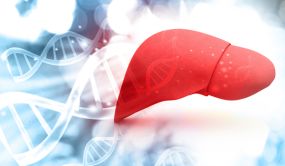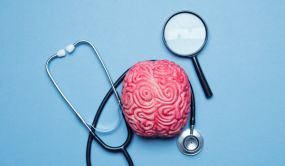Heart Attack vs. Panic Attack: Key Symptoms, Chest Pain Causes, and How Doctors Tell Them Apart
Heart attacks and panic attacks are two medical emergencies that people often confuse because they share several overlapping sensations. Both conditions can cause intense chest pain, rapid heartbeat, difficulty breathing, and overwhelming fear. This overlap can lead people to mistake one for the other, delaying the urgent care needed during a true cardiac emergency. Knowing how to identify the differences is essential for protecting your health and responding quickly when symptoms strike.
Understanding the difference between heart attack symptoms, emotional responses, and other chest pain causes can help individuals seek the proper care at the right time. Since misinterpreting these warning signs can be dangerous, recognizing what separates panic attack vs heart attack symptoms is an essential part of maintaining long-term well-being.
Key Heart Attack Symptoms and How They Present
Heart attack symptoms occur when blood flow to the heart is blocked, usually due to a blood clot or narrowed arteries. According to the CDC, heart attacks can begin suddenly or develop over hours. The symptoms may vary from person to person, but there are classic warning signs that help doctors identify an actual cardiac event.
Common Heart Attack Symptoms
- Chest pain or pressure: Often described as squeezing, fullness, tightness, or heavy pressure in the center or left side of the chest.
- Pain radiating to other areas: Discomfort may spread to the jaw, neck, shoulder, or arm.
- Shortness of breath: This can occur with or without chest pain.
- Cold sweats: Sudden sweating without exertion is a common sign.
- Nausea or vomiting: Digestive symptoms often accompany cardiac distress.
- Lightheadedness or fainting: Reduced blood flow may cause dizziness or a near-fainting sensation.
Doctors note that heart attack symptoms tend to last longer than 5 minutes and often worsen with physical activity. They do not improve with rest alone, and they may intensify steadily. Women may experience slightly different symptoms, such as jaw pain, unusual fatigue, or upper back pressure.
Based on a study conducted by the National Institutes of Mental Health, some individuals experience "silent" heart attacks with minimal chest pain, making it especially important to pay attention to any sudden changes in breathing, energy levels, or chest sensations.
Understanding Panic Attacks and How They Mimic Heart Attacks
A panic attack occurs when the body responds to stress or fear with an intense surge of adrenaline. While panic attacks are not life-threatening, they can feel extremely frightening and almost identical to heart-related emergencies. This confusion between panic attack vs heart attack symptoms often leads people to seek emergency care, unsure of what is happening to their body.
Signs of a Panic Attack
- Rapid heartbeat (palpitations)
- Chest tightness or sharp pain
- Shortness of breath or hyperventilation
- Tingling in the hands or face
- Lightheadedness or dizziness
- A feeling of choking
- A sense of impending doom or fear of dying
Panic attacks usually peak within 10–20 minutes and gradually fade. Unlike heart attacks, panic attacks often occur at rest or during periods of high stress rather than physical activity. They are also more likely to involve emotional symptoms such as fear, anxiety, or a feeling of detachment from reality.
According to the Cleveland Clinic, panic attacks do not cause permanent heart damage even though they produce intense physical reactions. However, frequent panic attacks can significantly impact quality of life and lead to chronic anxiety if not treated.
Common Chest Pain Causes Beyond Heart and Panic Attacks
Not all chest discomfort is caused by cardiac emergencies or panic episodes. There are many other chest pain causes that can mimic both conditions and require medical attention to diagnose correctly.
Other Medical Conditions That Cause Chest Pain
- Acid Reflux (GERD): Stomach acid flowing back into the esophagus can cause a burning sensation, often mistaken for heart pain.
- Muscle Strain: Overexertion, poor posture, or lifting heavy objects can cause chest muscle soreness that worsens with movement.
- Costochondritis: Inflammation of the cartilage connecting the ribs to the breastbone can lead to sharp, stabbing pain.
- Anxiety Disorders: Chronic anxiety may cause ongoing chest tightness, increased heart rate, and difficulty breathing.
- Respiratory Conditions: Infections such as pneumonia or bronchitis may cause chest discomfort, coughing, and breathing difficulties.
Because chest pain can originate from many areas of the body—including the lungs, digestive system, muscles, or nerves—it's essential to seek medical advice for proper evaluation. Only a healthcare provider can accurately determine which chest pain requires immediate treatment.
Conclusion
Understanding the differences between heart attack symptoms and panic attacks can save lives. Early recognition of cardiac warning signs—especially chest pressure, radiating pain, nausea, and shortness of breath—ensures timely treatment and better outcomes. Meanwhile, knowing how panic attacks present can reduce fear and guide individuals toward proper mental health support. Because panic attack vs heart attack symptoms can overlap, a healthcare professional should evaluate any severe or unexplained chest discomfort. By recognizing the various causes of chest pain, taking risk factors seriously, and seeking medical help when needed, individuals can protect their heart health and respond confidently when symptoms arise.
Frequently Asked Questions
1. What should I do if I'm unsure whether my chest pain is a heart attack?
If you are uncertain, treat it as an emergency. Call emergency services immediately. It is safer to have a medical professional rule out a heart attack rather than ignore potentially serious symptoms.
2. Can panic attacks cause physical heart problems?
Panic attacks do not cause heart attacks or long-term damage. However, chronic stress and anxiety can contribute to elevated blood pressure, which is a risk factor for heart disease.
3. How do doctors diagnose heart attacks versus panic attacks?
Doctors use ECGs, cardiac enzyme blood tests, and imaging scans to identify heart damage. Panic attacks are diagnosed based on symptoms, medical history, and psychological evaluation.
4. What are the risk factors for heart attacks I should be aware of?
Major risk factors include smoking, high blood pressure, high cholesterol, diabetes, obesity, family history of heart disease, and physical inactivity.




























